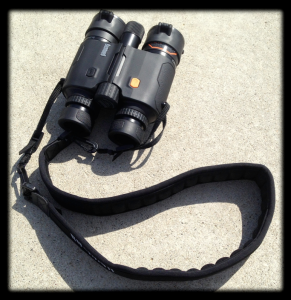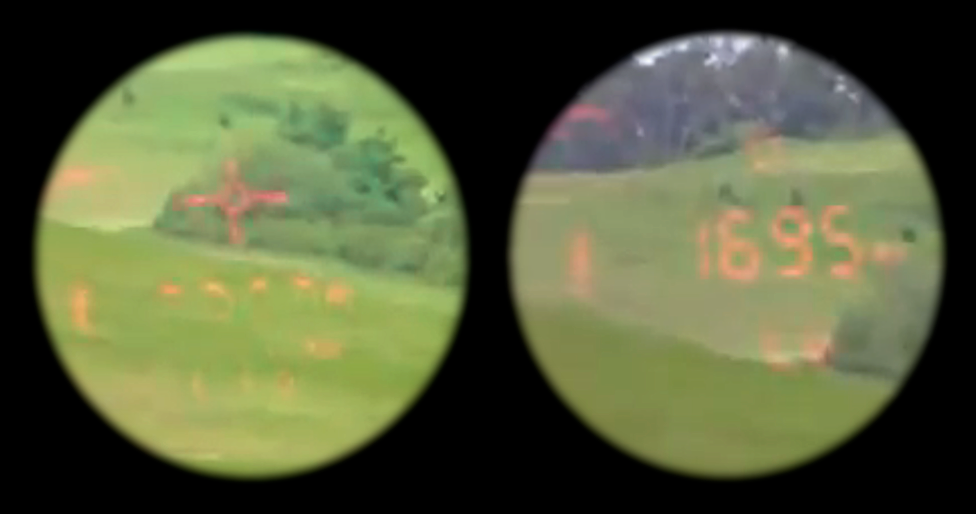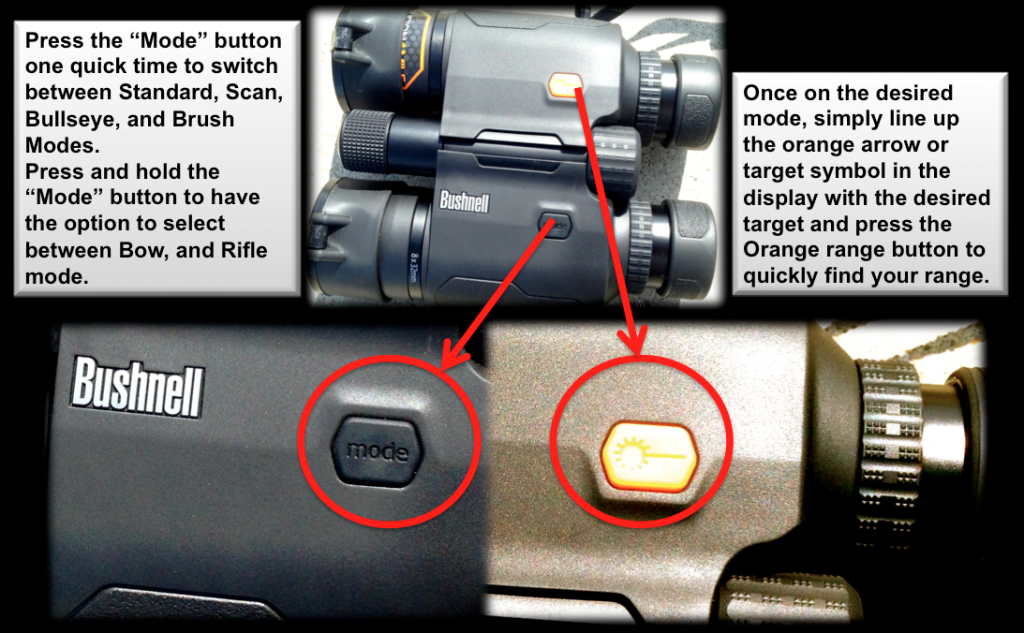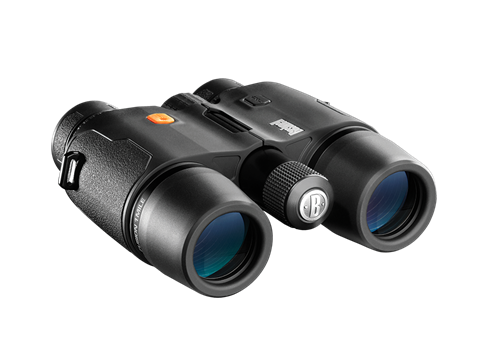 Back in April, at a long range competition at Thunder Valley Precision (TVP) in Ohio, I had the chance to put Bushnell’s new Fusion 1 Mile ARC 8x32mm Range Finder through it’s paces. (It is also available in 12x50mm and 10x42mm versions.) My teammate for the match had just purchased the Bushnell Fusion, they had only been available to the public for a couple months at that point, so it was exciting to try out the new “toy”.
Back in April, at a long range competition at Thunder Valley Precision (TVP) in Ohio, I had the chance to put Bushnell’s new Fusion 1 Mile ARC 8x32mm Range Finder through it’s paces. (It is also available in 12x50mm and 10x42mm versions.) My teammate for the match had just purchased the Bushnell Fusion, they had only been available to the public for a couple months at that point, so it was exciting to try out the new “toy”.
Quickly, I discovered that they were made with quality in mind, rugged, strong, and solid. I removed the ocular lens covers, flipped up the objective lens covers and looked through the binoculars for the first time. The absolute clarity of the glass was remarkable. I have spent hours looking through various optics, and the glass used in the Fusion was as clear as anything I have seen. Unlike the older Bushnell models, there is no blue tint. I am sure that someone far more qualified than I am to make such a judgment would point out the flaws, but for most people, and given the price of this model, I am not sure the increased perfection would be worth twice the price for the extreme high-end brands.
One of the other teams was using a Vectronix Tarrapin, a known dependable, high quality Range Finder. We were able to compare our Bushnell Fusion against the Vextronix Tarrapin, as well as verify the ranges we found by doing Quality Assurance checks with the Tarrapin, as the Tarrapin would undoubtedly “out range” the Bushnell.

The read out and aim point on the Bushnell, while not as nice as the Tarrapin, is still very easy to see on bright days and easy to use. It does not washout in sunlight and is precise enough to hit small targets. I was not able to hit the one-mile target at TVP with the Bushnell, but anything 1500yds and in was easy. I did hit the front door of a house at 1714yds using a truck bed for stability without any trouble. (The distance was verified with the Tarrapin.) Conditions were very sunny and bright and even the Tarrapin was having problems hitting anything beyond 2000yds that day. I ranged cows out to 1100yds+, steel plates out to 1200yds and just about everything else I could find. I haven’t used the Leica or the Swarvo range-finding binoculars but for the difference in cost there had better be something truly extraordinary about them, or they will lose customers to Bushnell.
The other RF we normally use is the Ziess PRF, the PRF is a decent unit, but does not perform like the Bushnell. I am not an engineer, but my opinion is the Beam Divergence on the Ziess is far too large to be accurate around any type of obstacle, the Ziess has given us a great deal of trouble around tree branches and foliage when we use it in the woods. When we had trouble with the Ziess, we turned it vertically, which does help miss obstacles below and above your intended target but it still frequently hits small objects beside your target or in front of it. Honestly I do not know what the beam divergence is on the new Bushnell but, the Bushnell is far out performing the Zeiss PRF in in this arena. One of the modes the Bushnell Fusion has is a “Brush Mode”. The Brush mode works by “ignoring” smaller objects like branches, leaves, and other foliage and instead ranges the farthest ranged object in the distance and returns the measurement.
 One 1000 yard target we shoot in the woods is an 18″x18″ plate, and it’s very difficult to hit with a rangefinder because in order to get the 1000 yard range, the shooter is tucked deep into the woods, and must shoot through a clearing in the trees and over a couple of valleys to the target that’s tucked far into the woods across the way. It’s also a very hard target to hit with a rifle on windy days due to hitting trees while holding wind. The last 150yds is like shooting into a cave with all the tree trunks and limbs hanging out in front of the target. My friends had to use GPS to place the target, because they have never been able to get the Zeiss PRF or a Lecia 1600 to work in that location. When we took the Bushnell 1 Mile ARC to that target, we hit it over and over at 1003 yards.
One 1000 yard target we shoot in the woods is an 18″x18″ plate, and it’s very difficult to hit with a rangefinder because in order to get the 1000 yard range, the shooter is tucked deep into the woods, and must shoot through a clearing in the trees and over a couple of valleys to the target that’s tucked far into the woods across the way. It’s also a very hard target to hit with a rifle on windy days due to hitting trees while holding wind. The last 150yds is like shooting into a cave with all the tree trunks and limbs hanging out in front of the target. My friends had to use GPS to place the target, because they have never been able to get the Zeiss PRF or a Lecia 1600 to work in that location. When we took the Bushnell 1 Mile ARC to that target, we hit it over and over at 1003 yards.
Bushnell has created a quality product in the Fusion – I have very few negative points to cover. The two critiques I found actually have nothing to do with the operation or function of the Fusion. First, the lens caps that flip up on the Objective end are great, but there are still two small removable caps on the Ocular lenses. To use the fusion, I had to remove the small caps, and put them in my pocket (or something), hope I did not lose them, and then dig them out to replace them when I was finished. I wish they were attached in some fashion. Also, these range finders come with both a nice carrying case and a well made, thick, comfortable neck strap. The only problem is, if you have the neck strap connected to the range finders, it does not fit into the case. I wish the case had been designed to accommodate for the strap, so that I would not have to remove the strap to put the Bushnell Fusion away.
I have not reviewed the Rifle mode or the Bow mode in this article, as that actually requires a completely different discussion – and I am going to need to spend more time with the Fusion to really let you know my thoughts. There is a very thick manual that comes with these range finders, and it is easy to understand. Apparently, the rifle mode will take into account the ballistics of over 2,000 different common rounds and then not only range but give you your come ups in MOA or MIL. It even has a method for you to enter the data for your custom loads. As I have more opportunity to wrap my head around that, I will tell you more about it. The Bushnell Fusion 1 Mile ARC Range Finder brings A LOT of capability in a small, “best-value for your dollar” package.



You must be logged in to post a comment.